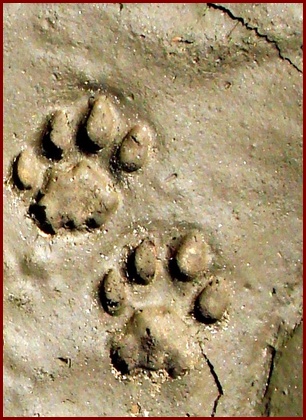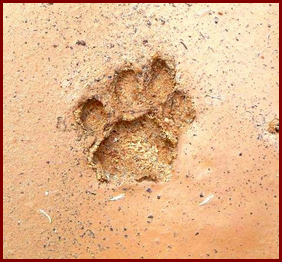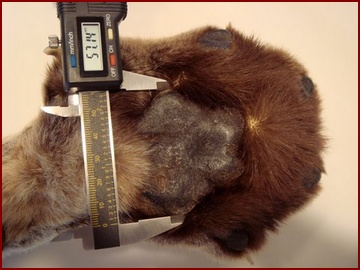COPYRIGHT 2012 DICK NEWELL
 |

ANALYZING THE FELINE TRACK

Front~Rear: As seen in this photo the cougar's front track is larger and more round than the rear track and the overall track is more asymmetric. Local cougar tracks with a heel pad in excess of 50 mm in width are considered to be that of a male. Experienced trackers report observing a certain robustness in the shape of the sides of the heel pad of the male cougar. The rear track of the cougar is smaller but a little taller with more free space between the heel pad and the digits. It is not as asymmetric as the front and the bi-lobe on the top of the pad may be less distinct.
 |
 |
 |
Gait: The normal gait for a bobcat or a cougar is a walk. They often direct register their tracks by placing their rear foot directly on top of the track of the front foot.

Tracks of this family are asymmetric with the heel pad slanting outward and the digits toward the inside. They are round in shape, show four digits front and back and will seldom show claws. The leading toe will be digit #3. The triangular heel pad is bi-lobed on the top and tri-lobed on the bottom and the area this pad consumes equals or exceeds the area of the sum of the digits. Cats tend to put their weight on the rear of their foot and so the three lobes of the heel pad are usually highly visible. Other than the domestic cats we only have bobcats and cougars locally and with their size differential there should be little confusion even though there is great similarities in the tracks of both species.
 |

Right~Left: You can separate the left from the right by seeing which is the leading toe in each track. Compare the length of the four fingers on the human hand and note that digit #3 is the longest. This is the same with all felids.

 |

Measurements: If you have a track of a cougar's front foot and the width of that heel pad exceeds 50 mm then you are dealing with a male. To ensure accuracy in obtaining these measurements the use of calipers is suggested. When measuring the track in the substrate be sure to get the actual track and not the larger apparent track. Take your measurement at the widest part of the heel pad as shown here.

